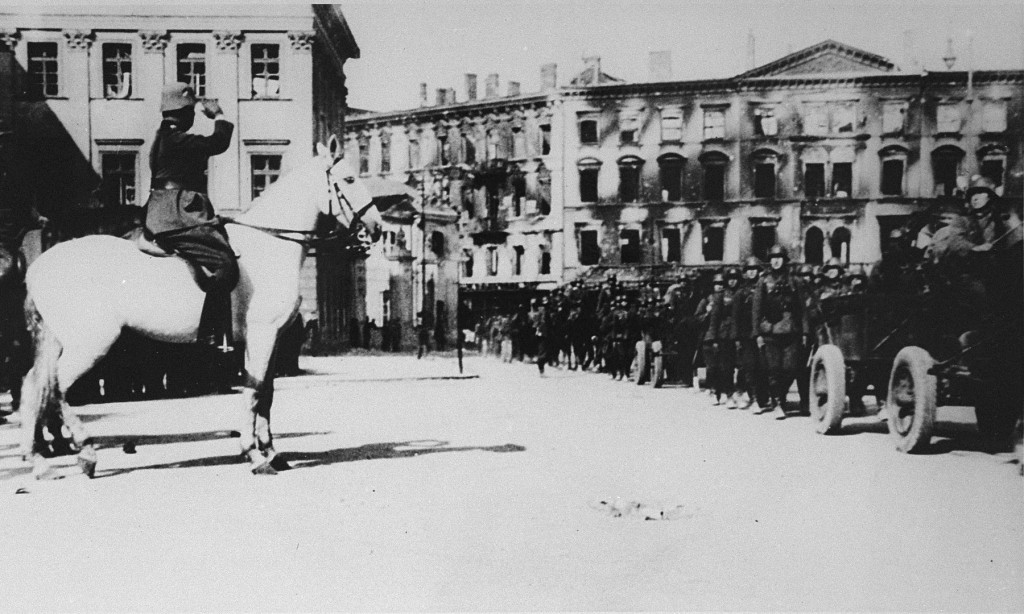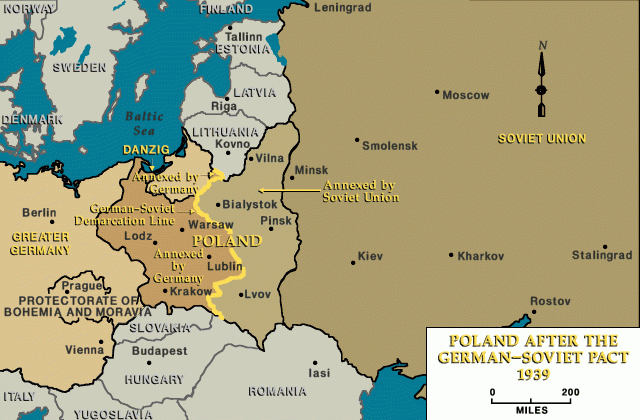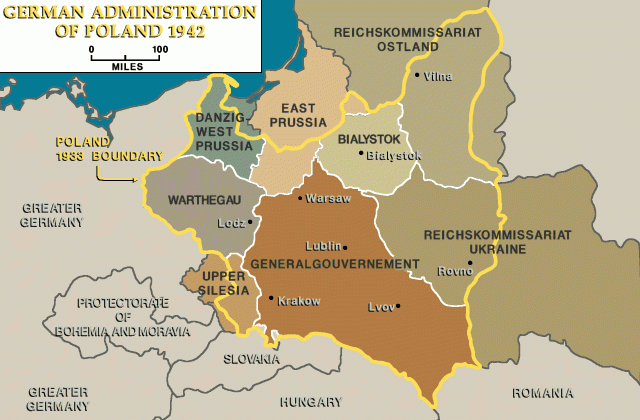
German Administration of Poland
We didn't know what's coming and it was a horrible thing, that first night.
—William (Welek) Luksenburg describes the first night of the German invasion of Poland
Germany attacked Poland on September 1, 1939. Within weeks, the Polish army was defeated. From East Prussia and Germany in the north and Silesia in the south, German units, with more than 2,000 tanks and 1,000 planes, broke through Polish defenses along the border and advanced on Warsaw in a massive encirclement attack. After heavy shelling and bombing, Polish forces in Warsaw officially surrendered to the Germans on September 28, 1939.
Britain and France—which had agreed to defend Poland in the event of a German attack—declared war on Germany on September 3, 1939. The Soviet Union occupied eastern Poland on September 17, 1939, in accordance with the German-Soviet Pact of August 1939.
In October 1939, Germany annexed most of western Poland. The former Polish corridor and the Free City of Danzig were incorporated into the new German province of Danzig-West Prussia. The district of Ciechanow (Zichenau), directly to the south of Allenstein (Olsztyn), East Prussia, was attached to the German province of East Prussia. The former Polish province of Poznan and part of Lodz were combined into a new province called the Warthegau. Finally, the Polish part of Upper Silesia, a small area of southwestern Poland including the cities of Katowice and Oswiecim (Auschwitz), was incorporated into the German province of Silesia.

The remainder of partitioned Poland that fell to Germany under the secret provisions of the German-Soviet agreements of August and September 1939 was organized into the "Generalgouvernement" (General Government) of Poland on October 26, 1939. The Germans placed the Generalgouvernement under civilian authority with the seat in Krakow. The chief administrator was Governor General Hans Frank, a lawyer and longtime follower of Adolf Hitler. The area was divided into four administrative districts with seats at Krakow, Warsaw, Radom, and Lublin.

When it invaded the Soviet Union in June 1941, Germany also conquered eastern Poland, which the Soviets had annexed in accordance with German-Soviet agreements of August and September 1939. The region around the city of Bialystok was administratively attached to the German province of East Prussia, though it was not formally annexed to Germany. In southeastern Poland, the region around Lvov (also known as Galicia) was attached as a fifth district to the Generalgouvernement. With the addition of Galicia, the population of the Generalgouvernement exceeded 12 million. East-central Poland became part of the newly established German administration of the Ukraine, while northeastern Poland became part of the new administrative region Reich Commissariat Ostland.
Virtually all of Poland remained under German occupation until the Soviet offensive into eastern Poland in the summer of 1944.
Critical Thinking Questions
Did the division of territory described affect the treatment of Polish Jews?
Investigate where the five killing centers were located in German-occupied Poland. Why were these locations chosen?

